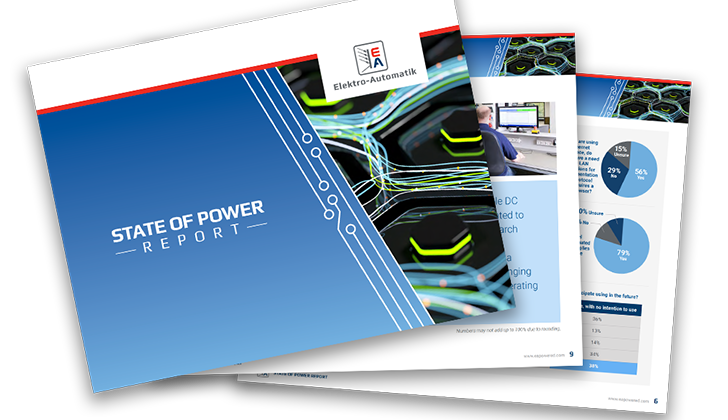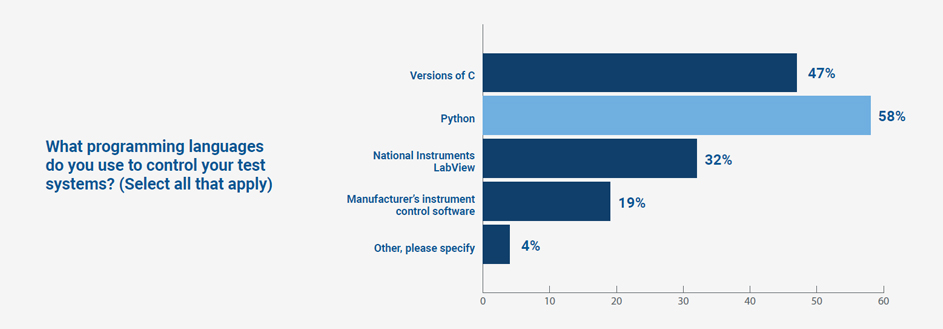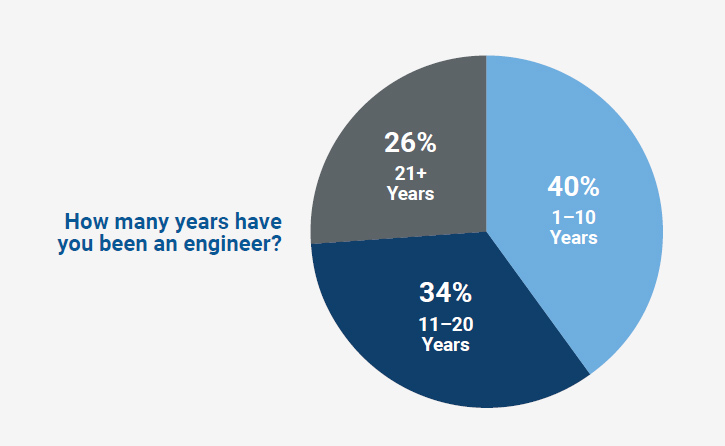State of Power Report: Trends Shaping the Future of Power Supplies
October 24, 2023 | Topics: Bidirectional Power Supplies, Electronic Loads, Power Supplies
In a recent State of Industry survey conducted by EA Elektro-Automatik, electronic engineers revealed intriguing trends in the world of power supply and testing. This comprehensive survey garnered insights from 365 engineers across various industries, shedding light on the evolving landscape of power requirements, instrumentation preferences, and the growing importance of sustainability.
More power on the horizon for DC programmable power supplies
The drive for more power in DC programmable power testing supplies has been increasing as more powerful electronics are entering the market. The past few years have seen an increase in the power of electronic vehicles, hydrogen production and other new technologies. It’s not surprising that those surveyed indicated they are either currently working with high power requirements or foresee working with higher power in the near future.
A striking 64% of respondents across industries foresee an increase in their power supply voltage requirements, with some anticipating the need for voltages exceeding 2000 V. This upward trend in power demands extends from early-stage design applications to production testing. Astonishingly, around 13% of engineers anticipate a future need for power exceeding 10,000 W.
Ready to Get Started? Request a Quote
The market shifts to multi-purpose instrumentation
DC bidirectional power supplies, capable of sourcing and sinking power within a single instrument, gained popularity among both design and production engineers. The majority of design engineers and production engineers considered this capability cost-effective. Moreover, most respondents expressed a need for power supplies that could generate varying waveforms, highlighting a demand for programmable power instruments with built-in arbitrary waveform generators.
Unsurprisingly, regenerative bi-directional power supply instrumentation, designed to save energy and return power to the grid during testing, garnered widespread appeal. Nearly all production engineers and design engineers deemed energy savings as either moderately or extremely important, emphasizing the industry’s commitment to sustainability. This supports the industry’s interest in and technology development of “green” hydrogen, electronic vehicles, and regenerative DC programmable power supplies.
 Sustainability was overwhelmingly noted as important by respondents.
Sustainability was overwhelmingly noted as important by respondents.Electronic testing and monitoring over distances
Remote monitoring and testing are experiencing continued growth as engineers are increasingly tasked with supporting systems in remote locations. More than 60% of both production and design engineers are involved in such remote support, nearly all expressing a willingness to use instruments with web browser capabilities for remote monitoring.
However, onsite configuration is still appreciated, especially for initial set-up and resolving issues. While the majority currently use Ethernet-based communication protocols, front panels are overwhelmingly preferred for test development, troubleshooting, and monitoring, showcasing the enduring importance of hands-on control.
Common programming languages
In the realm of programming languages, Python and various versions of C reign supreme. Python, in particular, stands out as the most widely used language at 58%. The popularity of open-source Python and collaborative platforms like GitHub has propelled Python to the forefront of engineering programming languages, surpassing even C in usage. The report showed that test engineers commonly use more than one programming language.
 Common programming languages
Common programming languagesDemographics of electronic engineers
This insightful survey was conducted via email in North America in late 2022 and included electronic engineers utilizing programmable power supplies. Notably, it wasn’t limited to EA Elektro-Automatik’s customer base; only 10% of participants came from their customer audience. This broad representation underscores the relevance and applicability of the findings to the wider engineering community. Respondents were almost equally distributed among engineering experience of 1-10 years, 11-20 years or 21+ years. The various industries of respondents included automotive, battery, production testing, renewable energy and more.
 The respondents’ years of experience was divided into three groups
The respondents’ years of experience was divided into three groupsThe “State of Power” report from EA Elektro-Automatik provides a compelling snapshot of the evolving landscape in DC programmable power supply and testing, highlighting the industry’s increasing power demands, the shift towards versatile instrumentation, the growing importance of sustainability, and the embrace of remote monitoring technologies. These trends are reshaping the future of electronic engineering and power supply applications, offering exciting possibilities and challenges for engineers in the field.
To see the complete report with graphs and charts of the different responses, download the entire State of Power Report.

